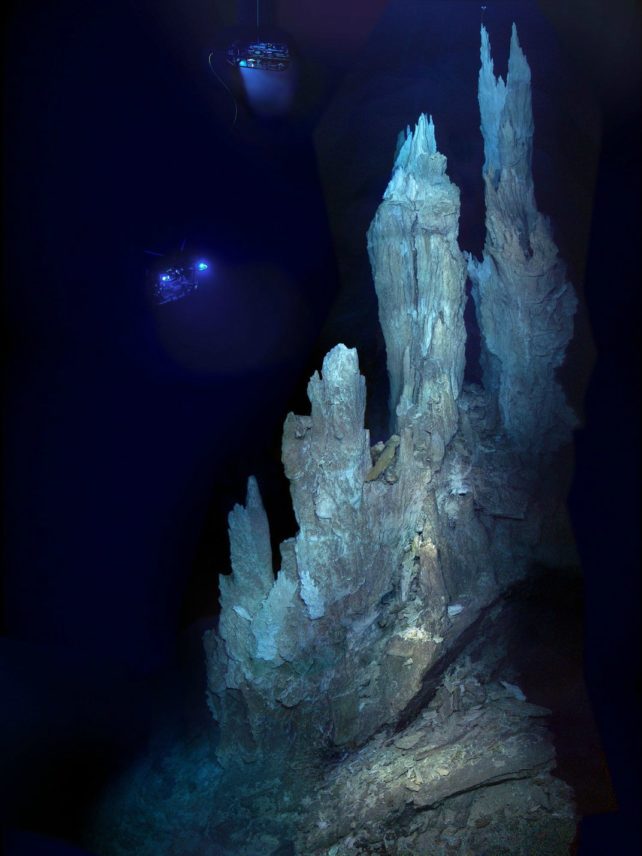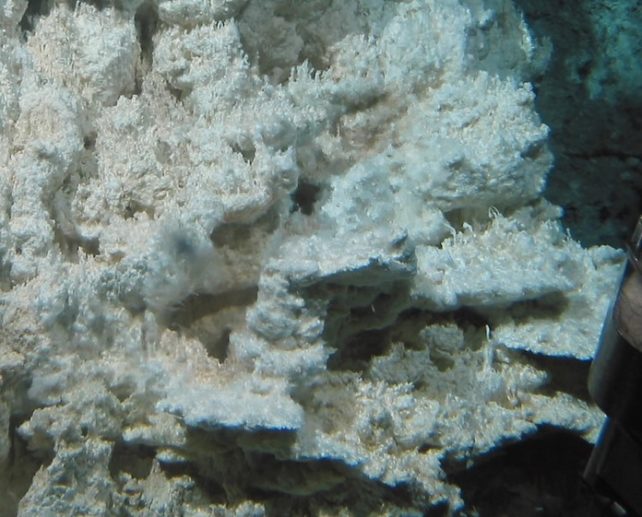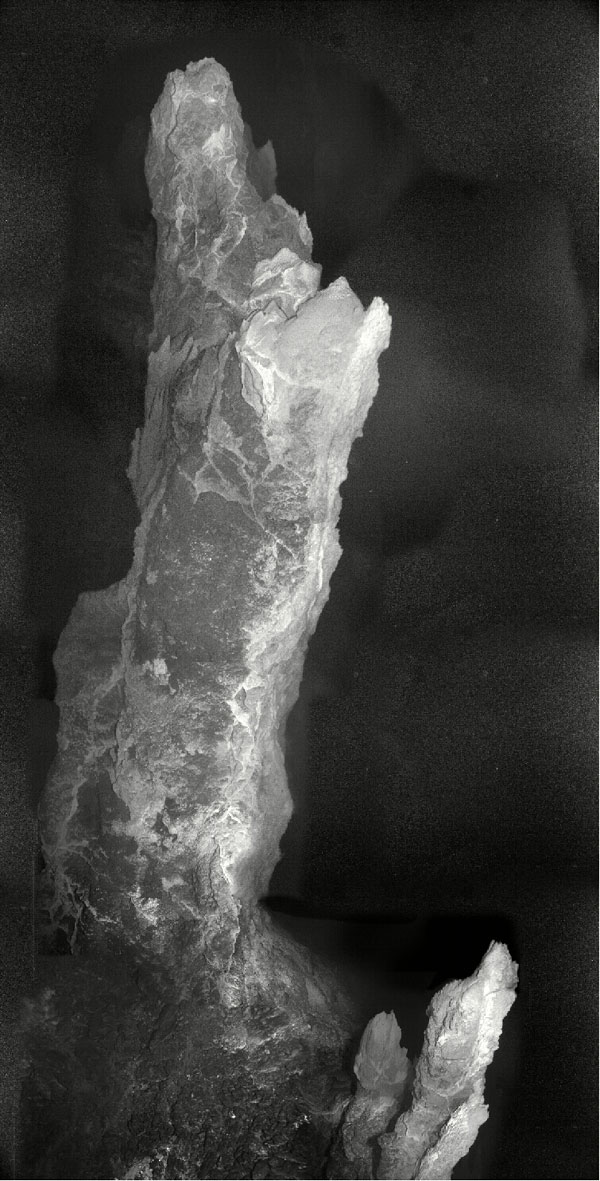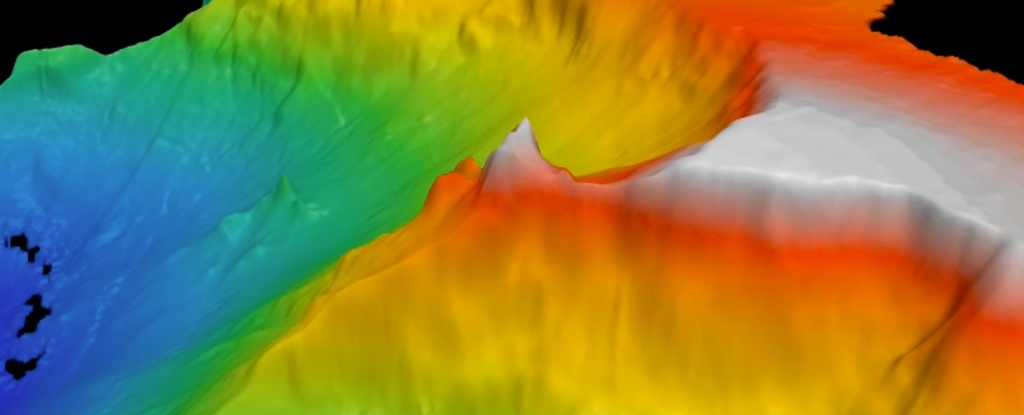Close to the summit of an underwater mountain west of the Mid-Atlantic Ridge, a jagged landscape of towers rises from the gloom. The Lost City Hydrothermal Field was discovered by scientists in 2000 and lies more than 700 meters (2,300 feet) beneath the ocean’s surface.
For at least 120,000 years, the upthrusting mantle in this part of the world has reacted with seawater to puff hydrogen, methane, and other dissolved gases out into the ocean. In the cracks and crevices of the field’s vents, hydrocarbons feed novel microbial communities even without the presence of oxygen.

Chimneys spewing gases as hot as 40 °C (104 °F) are home to an abundance of snails and crustaceans, while the larger animals such as crabs, shrimp, sea urchins, and eels are rare but still present.
Despite the extreme nature of the environment, it appears to be teeming with life, and researchers think it’s worth our attention and protection. The hydrocarbons produced by the Lost City’s vents were not formed from atmospheric carbon dioxide or sunlight, but by chemical reactions on the deep seafloor.

Because hydrocarbons are the building blocks of life, this leaves open the possibility that life originated in a habitat just like this one. And not just on our own planet.
“This is an example of a type of ecosystem that could be active on Enceladus or Europa right this second,” microbiologist William Brazelton told The Smithsonian in 2018, referring to the moons of Saturn and Jupiter. “And maybe Mars in the past.”
Unlike underwater volcanic vents called black smokers, which have also been named as a possible first habitat, the Lost City’s ecosystem doesn’t depend on the heat of magma. The calcite vents of the Lost City are also much larger than black smokers, which suggests they’ve been active for longer.

The tallest of the monoliths is named Poseidon, after the Greek god of the sea, and it stretches more than 60 meters high. Just northeast of the tower, researchers at the University of Washington describe the vents here as ‘weeping’ with fluid to produce “clusters of delicate, multi-pronged carbonate growths that extend outward like the fingers of upturned hands”.
However, the unique ecosystem of the Lost City faces a threat from potential deep-sea mining activities. Poland has been granted rights to mine the deep sea around The Lost City, which could have unintended consequences for the surrounding habitat. Any plumes or discharges triggered by the mining could easily wash over the remarkable habitat, scientists warn. Some experts are therefore calling for the Lost City to be listed as a World Heritage site, to protect the natural wonder before it’s too late.
For tens of thousands of years, the Lost City has stood as a testament to the enduring force of life. It would be a tragedy to ruin it for future generations.
This article was originally published in August 2022.


